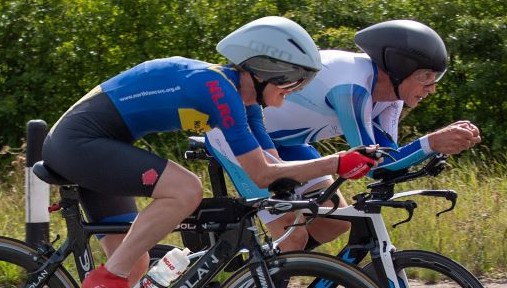Veterans Time Trials Association
Competitive Cycling for Life ^
What are Age Adjustments?

Following the agreement at the January 2023 AGM, the Age Adjustments method is now the preferred option for reporting the results of all VTTA championships, events and competitions. The website has now been updated to reflect the move to Age Adjustments and you can read the detail of these changes in the news article here.
If you are looking for the Age Adjustment tables: There are tables for all distances, both genders and all machine types on the website in the Age Adjustments section here. You can download tables for each distance (and 12/24 hours) and you can also produce a table for any customised (i.e. non-standard) distance. Under the Display Mode option you can also select to download the previous standard tables.
Why Introduce Age Adjustments?
Many, especially younger, vets riding time trials are perplexed by the VTTA standards system and how it determines finishing order. Although the standards system is based on solid evidence of performance decline due to ageing, the results are not presented in an easily understood manner. Age Adjustments is an alternative way of presenting such results which is more readily intelligible and comparable between riders.
The traditional standards system reports results as a vet's ‘plus’, or the improvement in minutes and seconds over the ‘base’ time that the standards system gives for their age and gender. Age Adjustments in contrast report a handicap, or adjusted, actual time. This gives an easily understood result which can also be readily compared to other riders.
Age Adjustments uses the same statistical formula as the standards tables and will therefore produce results in the same finishing order and with the same gaps between riders in terms of minutes and seconds. What changes is the presentation not the formula, which has been carefully determined from thousands of vets’ results.
The standards tables are therefore effectively represented as 'age adjustments'. These 'age adjustments' are then applied to the actual time for each rider so that the rider gets an adjusted actual time (or distance in 12 or 24 hour events). To make this clear here is an example that compares the presentation of results according to the traditional ‘plus’ with the Age Adjusted Time.
|
Rider |
Age |
Actual Time (a) |
VTTA Standard (b) |
Plus (b) – (a) |
25 Mile age adjustment (d) |
Age Adjusted Time (a) – (d) |
|
Man 1 |
|
|
|
|
|
|
|
Man 2 |
|
|
|
|
|
|
|
Woman 1 |
|
|
|
|
|
|
|
Woman 2 |
|
|
|
|
|
|
So instead of Man 1 telling his clubmates ‘I got a plus of 19:49’ (and blank stares) he can say ‘I rode the equivalent of a 46:11 ‘25’ on age adjustment' and receives appropriate plaudits !
How do Age Adjustments affect the VTTA's personal standards award system? It makes them simpler to understand and calculate! All a rider has to do is achieve a year-on-year improvement on their season's best age adjusted time at each distance.
In short, the new method help all vets understand their own and others' results as a personal best time (age adjusted) rather than a mysterious ‘plus’. We hope this will encourage participation and make more over 40s interested to join the VTTA.